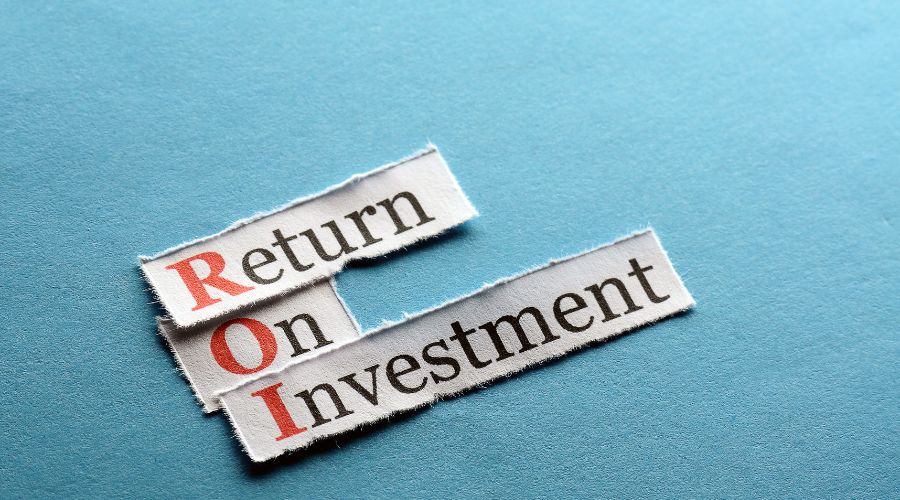Employee wellness programs produce a happier, healthier, and more productive workforce. However, some companies feel disappointed with their program’s results. There are numerous reasons why employee wellness programs (specifically wellness challenges) fall short, but these problems can often be mitigated by appropriate planning, communication, and buy-in from senior leadership.
The only real way to determine the efficacy of your wellness program is by measuring its return on investment (ROI). So, this guide discusses seven key metrics to keep tabs on as you roll out or update your program.
Source: Benepass
Benefits of an employee wellness program
If you’re on the fence about offering an employee wellness program at all, here are three compelling reasons to support your workers’ holistic health.
Attracting and retaining top talent
In today’s competitive market, employees and job seekers want more than steady compensation and career opportunities. They want a positive workplace culture and an employer willing to care for them in all aspects of their work and personal lives. The COVID-19 pandemic has made multiple generations refocus their priorities, and now 78% of Gen X workers and 79% of boomers consider wellness programs essential in 2023. These numbers are up from 56% in each respective category in 2019.
When employers aren’t willing to deliver on wellness, their workers will leave. According to a Harvard Business Review study, organizations with highly effective wellness programs report significantly lower voluntary attrition rates than those where effectiveness is low.
Increasing job satisfaction levels
Employee wellness programs positively impact job satisfaction by addressing physical and mental wellbeing. Initiatives such as fitness activities and nutrition education contribute to employees feeling healthier and more energetic, while stress management components foster a more relaxed and focused work environment.
In an “Analysis of a comprehensive wellness program’s impact on job satisfaction in the workplace,” the report reveals that participating in a wellness program “has an effect on increasing or maintaining current employees’ extrinsic and intrinsic job satisfaction levels throughout the organization.”
Supporting your employees’ mental health
Mental health is a huge component of any employee wellness plan, incorporating support for common challenges such as anxiety and depression, which may both affect workplace productivity. According to the Center for Workplace Mental Health, some 16 million Americans are impacted by depression every year, but 50% are left untreated. Employees have two choices—remain absent or attend the workplace and struggle with productivity at a collective cost of $44 billion to the economy.
Workplace wellness programs incorporating mental health support can be a game-changer here. Every $1 investment in treatment for depression and anxiety produces an ROI of $4 in better health and work performance.
What is ROI for wellness programs?

Measuring your wellness programs’ return on investment ensures that it:
- Meets your goals
- Allows your team to make adjustments
- Receives more budget for future wellbeing initiatives
Wondering what this looks like in action? Imagine that you’re presenting a business case for your wellness programs to key stakeholders. You’ll need to highlight data that supports how well-run health initiatives reduce healthcare premiums for employers, decrease workplace absenteeism, and improve company morale. A positive ROI speaks volumes in generating further buy-in.
How to calculate ROI of employee wellness programs
Calculating ROI for wellness programs can be tricky but worth doing as companies tie ROI to reduced healthcare costs. Some studies (like this Johnson & Johnson case study) show wellness programs produce a return on investment of $1.88-$3.92 saved for every dollar spent on the program.
To get a better measure of ROI, tracking more than just money saved is important. Other metrics or outcomes might be more difficult to measure or tie directly to wellness programs, but tracking them uncovers patterns when your wellness program has been running for a while.
Understanding VOI vs. ROI
It’s worth considering value on investment (VOI) for these metrics vs. ROI. VOI looks at “softer” measures like job satisfaction or employee morale that are typically self-reported. VOI does not usually have a numeric ratio attached to it as ROI does. Tracking both will give you a comprehensive picture of your program’s success.
Types of employee wellbeing
Gallup partnered with economists, psychologists, and various scientists to study what wellbeing looks like in the wild. Based on 98% of the world’s population, they believe five common elements are required for people to thrive in their lives. Career serves as the foundation for the other four types of wellbeing. Let’s explore each in closer detail.
Social
Social wellbeing refers to having meaningful relationships in your life. Sadly, the American Perspectives Survey reports that people have fewer close friendships than they once did, and they don’t rely on them as often for personal support or speak with them regularly.
But social connections are important for mental health and can occur in the workplace. Provide opportunities for teammates to engage, connect, and work together on non-work activities. You could also offer flexible working options to help employees balance their personal and professional lives so they have more time to explore hobbies and friendships outside of work.
Financial
With the turbulence of the economic climate, it’s no surprise that our financial position can influence our overall wellbeing. A 2023 CNBC survey confirms that 74% of Americans feel stressed about their finances and 61% live paycheck to paycheck.
Employee wellness plans can support financial wellbeing by offering resources and education on budgeting, retirement planning, and debt management. Financial wellness programs may also include benefits such as access to a financial planner or credit counseling services.
Physical
Physical wellbeing encompasses a person’s ability to maintain good health, including eating well, exercising regularly, improving sleep quality, and remaining mentally balanced. Gallup explains that all these factors contribute to the overall goal of physical wellness: having the “energy to get things done.”
As one of the more common aspects of an employee wellness program, physical well-being can include access to fitness classes, gym memberships, nutrition plans, and mental health services. Managers should also support physical health by understanding their employees’ needs for breaks and encouraging positive habits within the workplace.
6 employee wellness program metrics to track

Once your program is up, running, and embracing a holistic approach to employee health, here are several metrics that can help you gauge whether it’s a raging success:
1. Participation
One easy-to-measure item is how many employees participate in the program and the degree to which they participate. Low participation rates could indicate a lack of communication about the program or a flaw in the program’s design.
To effectively gauge its impact, establish a baseline for participation before you implement your program, then recalculate at regular intervals. Some ways to track interest include:
- Counting the number of questions raised during all-hands meetings before and after the wellness program has launched
- Monitoring usage of wellness resources such as gym visits, health screenings, and counseling appointments
- Tracking feedback to establish a connection with those who aren’t participating and to gather employee feedback from current participants
2. Employee satisfaction
Intuitively, happy employees will put in an outstanding performance at work and be actively involved in progressing the business.
In a groundbreaking study, Harvard Business Review explored the link between a satisfying employee experience and customer experience based on anonymized data from a large global retail brand. Three years of employee and financial data across 1,000 U.S. store locations revealed that employee experience was a strong driver of company revenue. Specifically, employees can go from generating $57 to $87 per hour worked when businesses focus on improving satisfaction through longer tenure, job rotations, skills development, and offering full-time roles.
You can easily measure employee satisfaction numerically through a survey. However, it’s also essential to highlight direct feedback from team champions, manager reviews, and stay or exit interviews. This employee feedback can help you iterate your program to make it more effective and engaging, turning passive workers into highly satisfied team members.
3. Employee morale
Employee morale measures how connected employees feel to their workplace, how engaged they are with their work, and how strong they feel the company culture is. A well-designed wellness program can boost employee engagement and loyalty, and you can track whether this is happening by:
- Conducting regular pulse surveys to measure overall job satisfaction and morale
- Measuring employee engagement through productivity levels and participation in company events and activities
- Tracking grievance reporting and turnover rates
- Highlighting trends based on manager discussions to address any issues with employee morale early on. For example, monitor the number of awkward conversations about declined raise requests or the general mood after performance reviews.
4. Absenteeism and presenteeism
Employees who feel healthier and believe their employer supports their wellness are less likely to need time off because of health issues or burnout and will be more present and productive at work.
Absenteeism can often be measured through sick days, but measuring presenteeism is more complex. Research on presenteeism (how mentally present someone is at work) indicates that healthier, less stressed employees are more engaged. An anonymous survey can help employees report if they have difficulty focusing on their work during the day or feel distracted by health or personal stress factors.
5. Talent recruitment
An engaging wellness program can help you stand out as an employer and attract top talent. In today’s competitive marketplace, highlighting your wellness initiatives is a selling point to potential hires, particularly Millennials and Gen Zers who strongly value mental health in the workplace.
SHRM research highlights that companies already know the value of this type of benefit, with 46% of employers ranking wellness benefits as very or extremely important. This is an increase of 10% since 2019. Understand how instrumental your wellness package is to prospective employees by:
- Tracking participation rates from onboarding onwards
- Counting questions related to your wellness activities during interviews and onboarding
- Monitoring candidate application numbers before and after promoting your wellness package in job ads
6. Employee retention and turnover
An employer-sponsored wellness program can be a key tool for employee retention. Recent research by Executive Development Network found that 86% of employees would be more likely to leave a job that does not support their wellbeing, while 83% felt attracted to working for companies with a “progressive company culture.”
But what does a well-designed wellness program targeting employee mental health and increasing morale, productivity, and engagement look like? The study notes that 19% of employees would welcome training on the impact of menopause, 62% expressed an interest in employers that create a positive work-life balance among staff, and 45% want mental health first aid training.
Exit interviews are one way to discover what you could have done to retain your talent, but a proactive stance is better. Get ahead of your employees’ departure plans by:
- Surveying your staff on their current satisfaction with where they work and what would make them more excited to be there
- Providing employee health and wellness retreats or classes to recharge your talent’s mental health batteries
- Running focus groups to discuss workplace stress and any other roadblocks that may lead to an employee wanting to leave
- Holding stay interviews to discuss what motivates your employees to stay with the company. This helps identify potential red flags and enables you to address any concerns before they become reasons for leaving.


